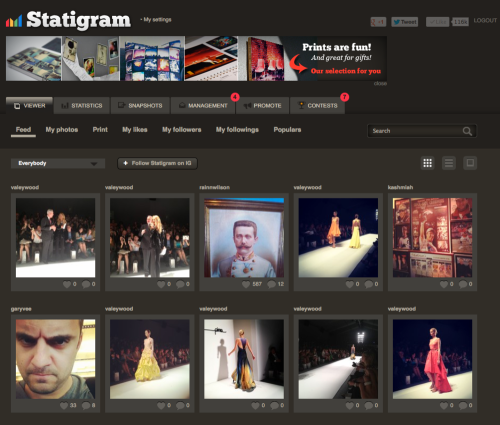I received my Pebble Watch in the mail two weeks ago today, marking the end of a long wait since funding the Kickstarter campaign last Spring and the beginning of my next phase of obsession with wearable technology. As a dedicated Fitbit user, a guy fortunate enough to have tried out Google Glass a few times, and an experimenter with many other gadgets in the space, I am proud to be an early adopter and advocate for the benefits of technology that can keep us coneected in more seamless and less disruptive ways. I jumped on board with the Pebble, because, at a minimum, it offered the promise of bringing the most important notifications from my phone to my wrist, allowing me to decide whether or not to interrupt my life by pulling my phone out of my pocket. So, how does it live up to that promise?
The short answer: It does send certain notifications to my wrist, which allows me to make decisions about when to interact with my phone more seamlessly, but not much more, at this point. After two weeks, it is more of a “nice to have” than a “must have” to me. I am certainly enjoying it, especially in social situations and when on the run (commuting, walking the dog, etc.), but it’s very rudimentary right now. The potential is huge, but the jury is out whether Pebble will own the space, or just be amongst the first to market.
What I like the most
SMS notifications: it really is great to be able to glance down at my wrist when I get a text, rather than compulsively pulling out my phone. This is much less disruptive when I am having a conversation, walking my dog or I am otherwise engaged in an activity. I have realized that I do not need to address a lot of text messages as soon as I get them, so this is a great way for me to be alerted of messages that are coming in, which I can make split second decisions about. Overall, this has helped me to be more present in my life, while staying attentive to pressing messages that might come in.
Caller ID: Like SMS, it is extremely helpful to see who is calling without pulling out my phone. This is especially true because I really don’t like speaking on the phone and often just let calls go to voicemail. Now, I can be minimally interrupted by calls by just glancing at my wrist and ignoring calls from there, instead of pulling out my phone.
Music player control: The Pebble also allows me to control whatever music app is playing on my iPhone (Spotify, Stitcher, iTunes, etc.). This isn’t a huge benefit for me, as my headphones have volume and skip control on the wire, but it’s nice to be able to glance down, see what track is playing and/or who the artist is, and control it if I choose.
Calendar alerts: I often leave my phone on my desk at work, so I can now be confident that I won’t miss an appointment if I step away to speak to someone or grab a glass of water. It’s also helpful when I’m on the go to be able to look at the location information for a meeting, instead of fumbling with my phone.
The Clock: Oh yeah, it’s a watch too, huh? I haven’t worn a watch for years, happy with the clock on my phone. Over the last few weeks, though, I’ve been reminded how nice it is to have the time readily available on my wrist, instead of having to pull out my phone and turn on the screen every time. I also really like the watch face with the time in words, for some reason, although there are a number of more creative ones as well.
Really easy setup and syncing: It only took a few seconds from unpacking to being fully functional on my wrist. You can see how simple it is to set up the watch on iOS here, and on Android here (sounds like it’s a bit more complicated). All of the notification settings are controlled in the Settings app on iOS, so it’s really just a matter of tweaking a few things here and there to get the right ones to show up on the Pebble. As new capabilities develop, it will get more complicated, but for now it’s pretty straightforward.
Simple, sleek and attractive design: The watch itself is comfortable, clean and understated. I haven’t worn a watch for years, because I’m not a big fan of accessories, so I’m happy that this addition to my arm is reserved, looks modern and cool.
What I don’t like/wish for
Limited notification options: First, I’ll say that I can only speak to the iPhone experience, and am aware that the options on Android are much more extensive (another reason to switch?). I am also aware that a lot of these limitations come from iOS, not a shortcoming in the abilities of the Pebble developers. That said, the only notifications I can get right now are SMS, caller ID, email, calendar and a silent vibrating alarm. On Android, I believe you can get notifications from Facebook and Twitter as well, but not on iOS. This raises the question: how much do I really want my wrist buzzing, in reality? Not that much (I turned off email notifications as soon as I finished testing them), but I’d like to have a wider range of choice about which apps communicate with the device. Hopefully, shortcomings like this will be quickly resolved with future software updates, but that probably depends to some extent on the reality of Apple’s plans for an iWatch.
Voice inputs: This would be a truly killer device if I could use voice controls and dictate to my phone without pulling it out of my pocket. Think about how great it would be to be able to respond to a text message alert on my wrist by dictating a quick response, all without pulling out my phone. There are people that think this Bond-like behavior is really wonky, but I use the dictation feature on the iOS keyboard all the time when I’m walking, driving or one hand is holding my dog’s leash. While having a phone conversation would probably be a bit much, I would welcome, the opportunity to do so withough having to pull out my phone.
Weak support/help: There are some helpful guides and FAQs on the Pebble site, but they’re limited. I’ve seen some info saying that I can send notifications from any iOS app to the Pebble, but haven’t been able to verify that beyond SMS, email and the others listed above. The Pebble team seems pretty overwhelmed trying to meet manufacturing demands, and have added a few new support staffers, but there’s a lot that is still a bit unclear. Growing pains for a new company, indeed, but it can be frustrating at times.
Summary
I’m very happy that I supported this project and will continue wearing my Pebble. It has made certain aspects of my digital life less intrusive and I missed it on the day that I accidentally left it at home. I am extremely excited about wearable technology, in general, and about where this and similar devices could go very quickly.
Do I think the wrist is the ultimate destination for wearable tech like this? I don’t know, but it seems to make sense for now. Google Glass will certainly test a whole other use case, including two-way communication with devices, when it launches soon. In the meantime, congratulations to the Pebble team on raising astounding funds and support for a solid early entry to this space.
Read More

























